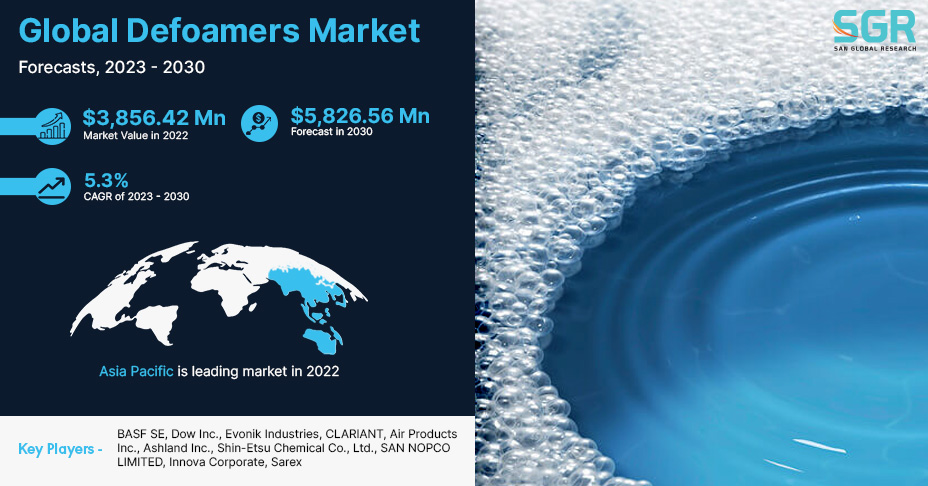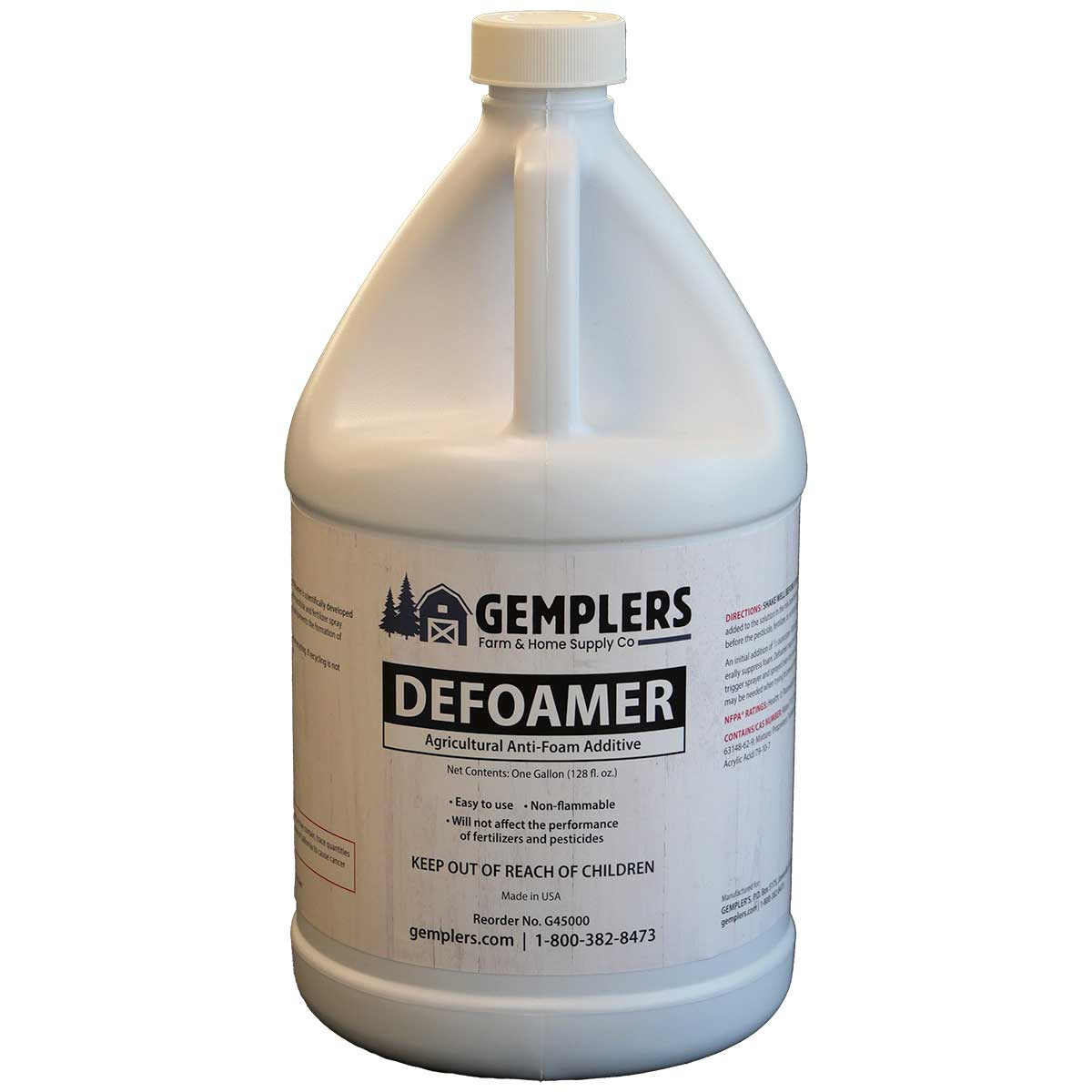Picking the Right Defoamer for Your Details Application Requirements
Choosing the ideal defoamer for certain application demands is a nuanced process that demands cautious factor to consider of numerous aspects, such as the foam tool, kind, and operating conditions. Comprehending the subtleties of defoamer efficiency-- consisting of rate and persistence-- while likewise accounting for regulatory and environmental aspects is essential. Furthermore, engaging in trials and seeking advice from makers can give beneficial understandings. Browsing these complexities can be complicated, and the consequences of a bad selection may be considerable. What strategies can be utilized to make certain an optimal choice?
Understanding Foam Formation
Foam formation happens when gas is entraped within a fluid, developing a steady framework of bubbles. This sensation can dramatically impact various industrial processes, especially in markets such as food manufacturing, drugs, and wastewater therapy. The existence of foam can prevent blending, minimize item high quality, and also cause functional ineffectiveness.
Foam commonly creates as a result of a mix of aspects, consisting of surface-active agents, agitation, and the qualities of the liquid stage. Surfactants reduced the surface area tension of the liquid, helping with the formation of bubbles that can stabilize and integrate. Frustration, whether from mechanical mixing or gas intro, boosts bubble development, bring about enhanced foam volume.
Recognizing the technicians of foam formation is critical for markets intending to maximize their procedures. By determining the particular conditions that promote foam generation, companies can apply approaches to mitigate its results. This understanding lays the groundwork for selecting appropriate defoaming representatives that successfully target the special challenges positioned by foam in various applications. A thorough understanding of foam formation is crucial for enhancing efficiency and keeping item stability throughout different fields.
Kinds of Defoamers Available
Various kinds of defoamers are offered to address the difficulties presented by foam in industrial applications. defoamers. Broadly identified, defoamers fall under 3 categories: silicone-based, non-silicone-based, and natural defoamers
Silicone-based defoamers are renowned for their performance and stability throughout a vast variety of temperature levels and pH levels. They are commonly used in applications where solid foam reductions is necessary, such as in finishings, paints, and adhesives. Their low surface tension enables for quick foam collapse.
Non-silicone-based defoamers, often made from organic compounds, use a choice for applications delicate to silicone residues. These defoamers can be further divided into polyether and ester kinds, each customized to fulfill specific formulation needs. Non-silicone defoamers are frequently used in food processing and personal care items as a result of their compatibility with numerous solutions.
All-natural defoamers, originated from plant or animal sources, are getting grip as a result of their eco-friendly account. These items are particularly appealing in applications where regulatory conformity and sustainability are vital, such as in agrochemicals and biotechnology.
Choosing the right kind of defoamer is important for optimizing performance and ensuring compatibility with particular applications.
Trick Application Factors To Consider
When choosing a defoamer, it is vital to consider the details application needs to make sure ideal performance. defoamers. Various markets have distinct demands, such as food handling, pharmaceuticals, or wastewater therapy, and each application might need special defoaming properties
Trick aspects to assess consist of the tool in which the defoamer will be made use of, whether it is water-based, oil-based, or a combination thereof. The temperature level and pH degrees of the application can also substantially affect the efficiency of a defoamer. Furthermore, compatibility with other chemicals existing in the system is crucial to stop unfavorable responses that could endanger performance.
One more vital consideration is the frothing behavior of the certain system. Understanding whether the foam develops check here promptly or slowly can assist the selection of a defoamer that targets the root reason efficiently. In addition, the desired speed of defoaming can affect the choice, as some applications call for rapid activity while others may tolerate slower defoaming procedures.
Finally, ecological and regulatory considerations must not be overlooked, especially in markets with rigorous conformity requirements. Choosing a defoamer that lines up with these aspects makes certain both efficiency and security in the application.

Efficiency Screening Techniques
Assessing the performance of a defoamer calls for an organized technique to screening that accurately gauges her response its effectiveness in particular applications. Numerous efficiency testing techniques can be used to establish the optimum defoamer for an offered formula.
One common method is the bubble examination, which examines the defoamer's capability to minimize foam volume over time. This examination involves generating a steady foam and then adding the defoamer to observe the price of foam collapse.

Inevitably, selecting the suitable performance testing technique depends upon the specific application and the kind of foam being addressed. Each technique supplies important data that can lead formulation modifications and enhance the efficiency of the defoamer in sensible applications.
Best Practices for Option

Following, consider the defoamer's efficiency in regards to speed of activity and persistence. A quick-acting defoamer might be necessary for processes where quick foam suppression is vital, while a much more relentless formulation could be needed for extended foam control. Furthermore, assess the environmental impact of the defoamer, including its biodegradability and any type of governing compliance needs.
Conduct trials with picked defoamers to identify their performance in real-world conditions. By sticking to these finest techniques, you can improve foam control effectiveness and ensure the durability of your procedures.
Final Thought
In recap, choosing the appropriate defoamer requires a comprehensive analysis of different variables, including foam kind, tool, operating conditions, and ecological factors to consider. Comprehending the one-of-a-kind qualities of foam development and the available defoamer choices is crucial. Furthermore, using effective performance screening methods and adhering to finest techniques during the choice procedure will certainly enhance the probability of attaining optimal defoaming results. Eventually, an educated selection technique will resolve specific application needs and reduce frothing obstacles effectively.
Picking the ideal defoamer for details application demands is a nuanced procedure that requires mindful factor to consider of several elements, such as the foam tool, operating, and type problems.Picking the appropriate defoamer visit this web-site is crucial for achieving optimal performance in foam control applications. A quick-acting defoamer may be essential for procedures where quick foam reductions is important, while a much more consistent formula may be needed for long term foam control.In recap, choosing the suitable defoamer necessitates a comprehensive analysis of numerous elements, including foam kind, medium, operating conditions, and ecological factors to consider. Comprehending the unique features of foam development and the available defoamer alternatives is critical.